aldon Farm & Aldon
aldon Farm & Aldon
The country seat of John Batten, elder and younger
According to Ekwall, the name Aldon derives from the Old English aewell, meaning a spring, and dun meaning a hill. Both conditions apply at Yeovil since Aldon Farm, and later Aldon House, lies on the hill immediately above the local beauty spot of Nine Springs.
The name Aldon was known before Aldon house was built since Watt's map of 1806 shows a footpath "To Aldon Farm, etc." and in 1832 and 1840-41 the Voter's List refers to both Aldon and Aldon Farm. The 1842 Tithe Map shows Aldon Farm as a simple building and not the impressive range of buildings that was to become Aldon House.
Aldon House is a beautifully-situated house, built on the site of the earlier farmhouse for John Batten (1775-1854) in 1829-30. The house is of Ham stone and mainly of two storeys, with smaller-scale three-storey additions on the north-west; the entrance front is classical Italianate and the garden front neo-Jacobean. The entrance side has two open-pedimented wings framing a five bay entrance front. The original central semi-circular arched doorway has been blocked, and entrance is now through a single storey porch in the angle between the centre and the right-hand wing.
The line of ownership of Aldon House is as follows -
-
built in 1829-30 for John Batten (1775-1854)
-
inherited by son, John Batten (1815-1900)
-
inherited by son, Henry Butler Batten (1845-1912)
-
inherited by nephew, Maj. Herbert Copeland Cary Batten (1884-1963)
-
inherited by son, William Henry Batten (1924-2013), who sold 1966.
The 1846 Tithe Apportionment noted that the owner was John Batten and the tenant was John Brook and eventually his son, John Brook Jnr.
Certainly in 1869 and until 1873 when he quit the farm, a Mr W Harris was the tenant farmer.
In 1875 (and until 1889), Tom Willmott Guy and later his son John Guy were listed as the farmers of Aldon Farm, at this time referred to as a sheep and dairy farm of 134 acres.
By 1890, the farm tenant was 30-year-old Frederick Greenham, originally from West Chinnock, although the farm was re-let in July 1892 and the stock, comprising a herd of dairy cows, several horses, sheep and pigs as well as the farm implements were auctioned in September 1892. The timber of the farm (34 Beech, 9 Oak, 4 Elm, 6 Chestnut, 4 Fir, 1 Walnut and 1 Lime) was sold off in October 1892. It would appear that the timber was owned by Mr Bartlett, Builder of Yeovil.
By 1895 the farm tenant was Samuel Laver Gould, until around 1910.
Gould was followed by Leslie W E Ward from around 1912 until 1919.
Ward was followed by A J Dowell as tenant farmer during the 1920s.
It would appear that Major H C C Batten ran the farm (as well as owning it) until August 1935 when he re-let it.
By 1939, the tenant farmer was A G Powell, who remained until at least 1961.
For details of the parcels of land making up the farm, see below.
Set within extensive parkland, originally a working farm, Aldon became the home of John Batten the elder, banker and solicitor, who purchased it in 1829. The house itself is a mid-nineteenth century country house built of Ham stone ashlar with a Welsh slate roof partly hidden behind parapets. It is U-shaped in plan and chiefly of two storeys. The entrance facade faces southwest, and is of five bays with the centre bay recessed and projecting wings to either side. The southeast garden front has three bays with the third bay is in the form of an end gable. The northeast, or rear, elevation is more complex with three Dutch gables and transomed windows of seventeenth century style.
By the time of the 1851 census Aldon was occupied by 36-year old attorney John Batten the younger, his wife Grace, their five young children and three servants.
map
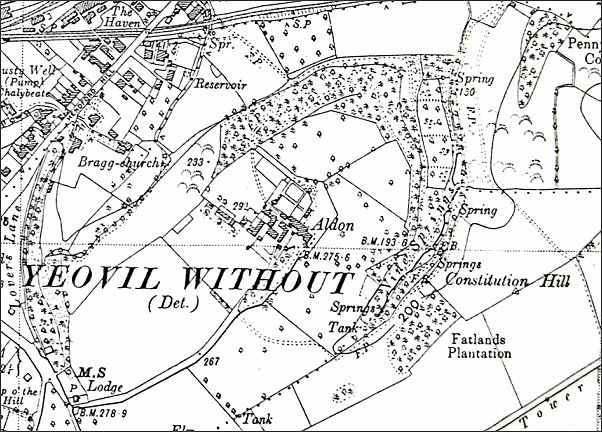
Map based on the 1938 Ordnance Survey showing the Aldon Estate. Aldon House sits on the hill surrounded by the wooded Ninesprings Valley, part of the estate and originally closed to the public. At top left is seen Hendford Hill and at bottom left is seen the Dorchester Road.
Aldon Farm
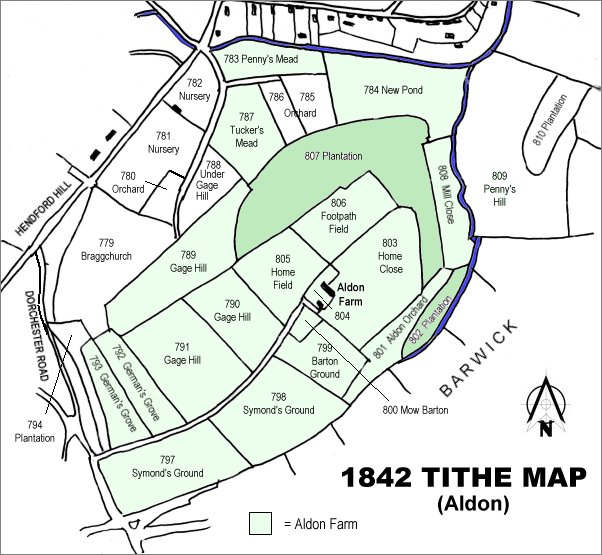
This map, taken from the 1842 Tithe Map, shows in green those fields that formed Aldon Farm, let to John Brooks. The two plantations (Parcels 802 and 807), shown in a darker green, also formed part of Aldon Farm but were not let out.
List of land parcels forming Aldon Farm
gallery
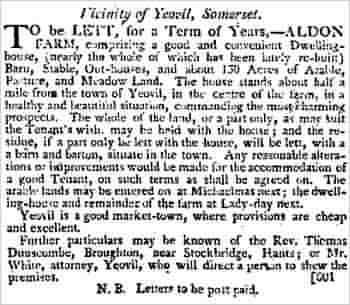
Note of letting of Aldon Farm from the Salisbury & Winchester Journal's 13 September 1802 issue.
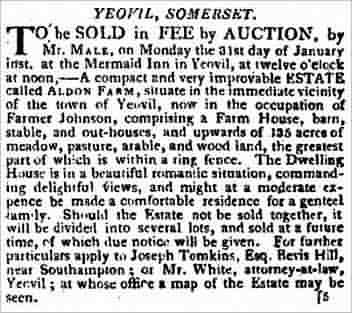
Notice of sale of Aldon Farm from the Salisbury & Winchester Journal's 3 January 1814 issue.
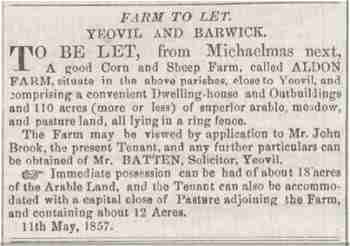
Note of letting of Aldon Farm from the 12 May 1857 edition of the Western Flying Post.
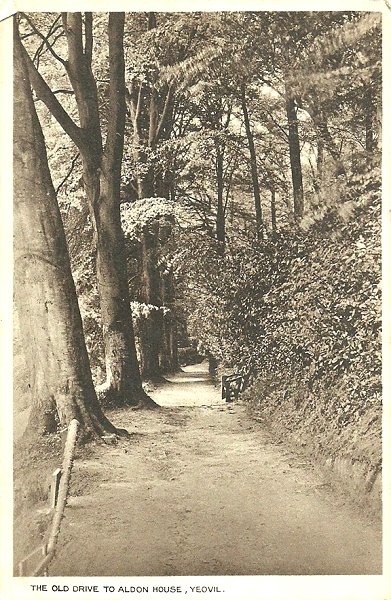
From my
collection
A postcard dating to about 1910 of the 'Old Drive' to Aldon House.
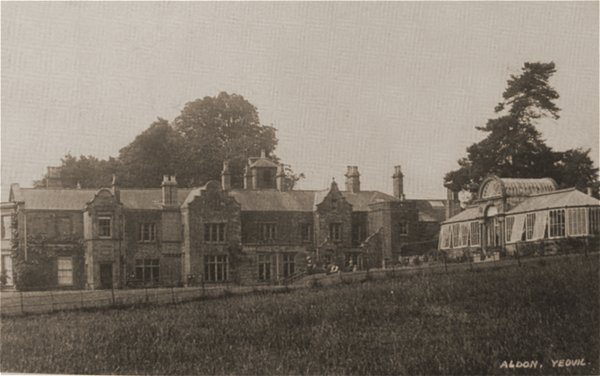
This
image
features in my
book 'Yeovil
- The Postcard
Collection'.
The northeast elevation of Aldon House photographed in a postcard of around 1910.
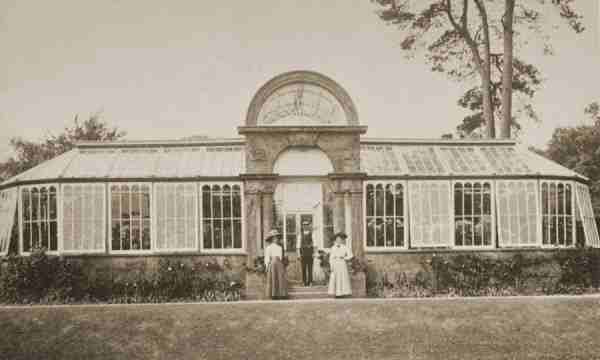
The orangery at Aldon, photographed in 1911.
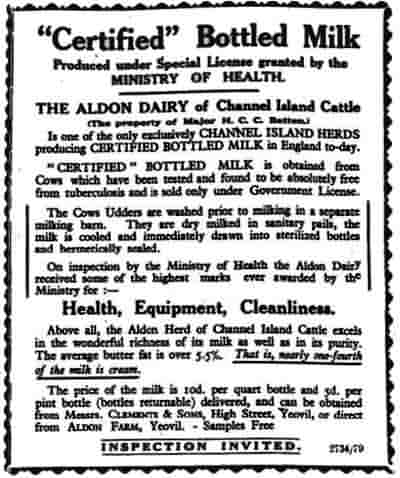
An advertisement from the 20 February 1925 edition of the Western Chronicle, extolling the virtues of the Aldon Dairy Hers and its milk.
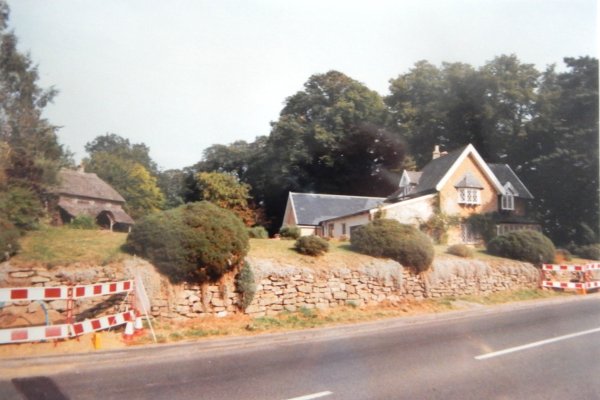
Courtesy of Jack
Sweet and South
Somerset
District Council
This is a photograph of around 1990 of Aldon Lodge, Dorchester Road, with the model of the Ninesprings Cottage in its garden.
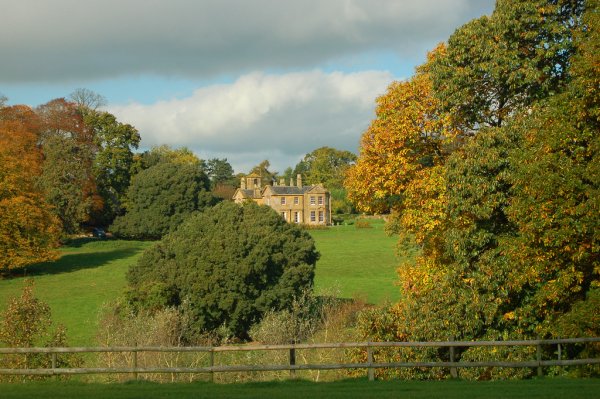
Aldon, set within its extensive parkland. Photographed in 2009.
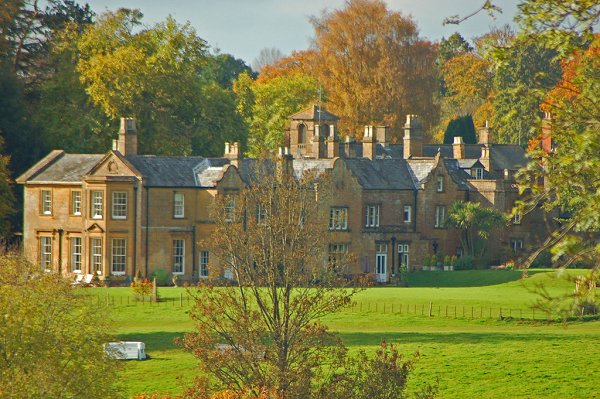
This photograph
features in my
book "Yeovil
In 50 Buildings"
A closer view of Aldon showing the Dutch gables of the northeast elevation. Photographed in 2009.
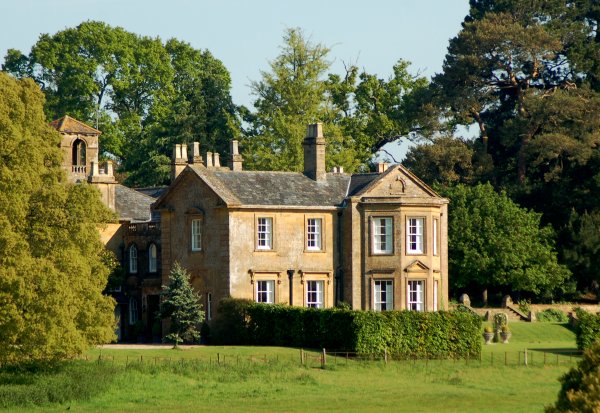
A closer view of Aldon's southeast garden elevation. Photographed in 2013.
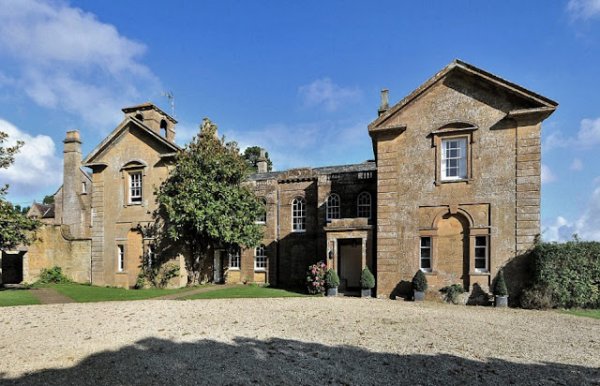
Aldon, the entrance front.
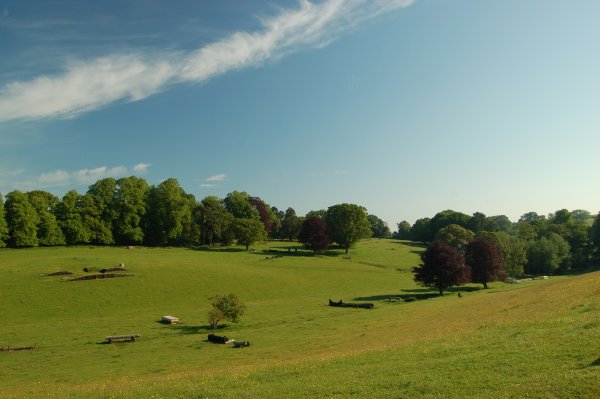
The Aldon parklands seen from close to Aldon Lodge. Aldon lies beyond the trees left of centre. Photographed in 2013. In 1846 this verdant field was an arable field called Symonds Ground.
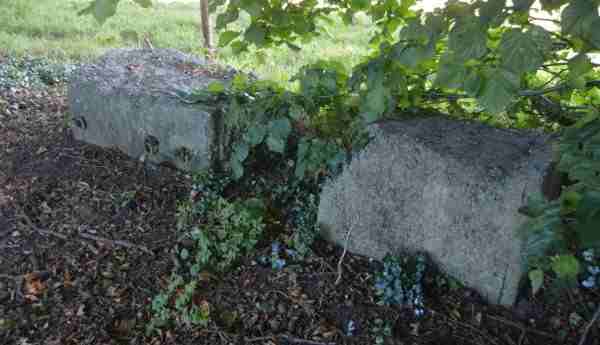
Concrete tethering blocks remain beside the lane leading to Aldon - Yeovil Barrage Balloon Site No 11, "Aldon Farm Dorchester Road"
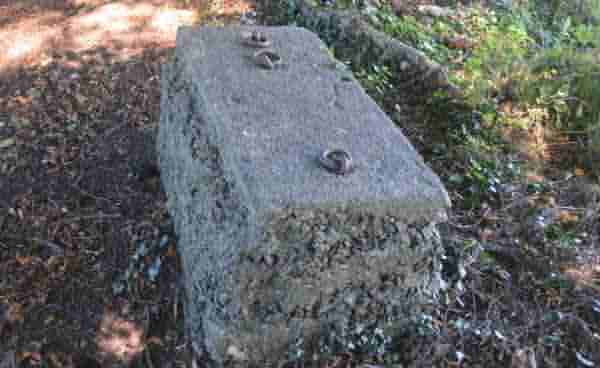
... and another of the Aldon tethering blocks, showing the metal rings cast into the concrete.